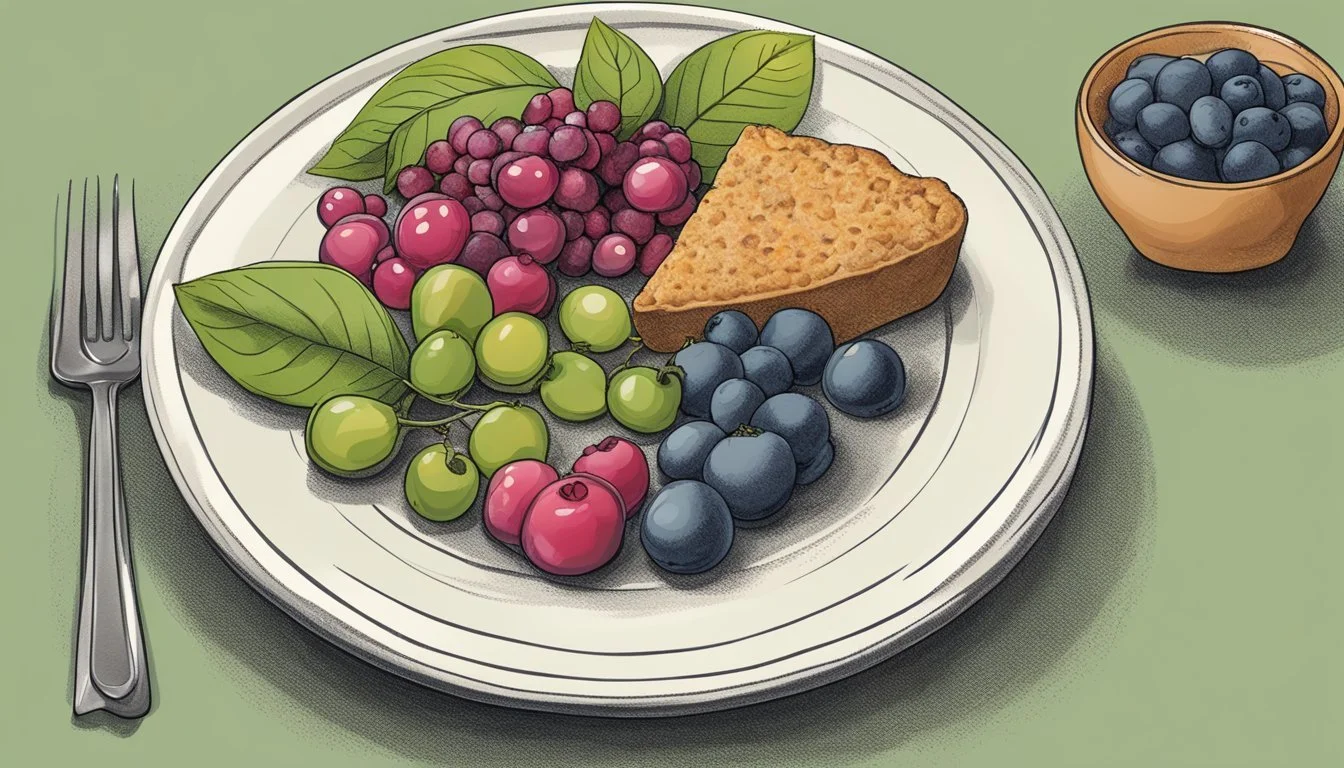Can Diabetics Eat Ugni?
Exploring Safe Dietary Choices
Understanding the relationship between diabetes and various fruits is crucial for effective meal planning. Ugni, also known as Chilean guava, is a small berry that is not commonly discussed in the context of diabetes management. Yes, diabetics can eat Ugni in moderation, as it is relatively low in sugar and carbohydrates, making it a suitable option for a balanced diet.
Ugni berries are rich in antioxidants and essential nutrients like vitamin C, which can support overall health. Its low glycemic index means it has a minimal impact on blood sugar levels, making it a beneficial fruit choice for those managing diabetes. Adding Ugni to a diabetes-friendly diet can be an enjoyable and nutritious way to diversify fruit intake while keeping blood sugar levels stable.
When incorporating Ugni into their diet, diabetics should consider portion sizes to ensure they stay within their carbohydrate limits. Pairing Ugni with protein or fiber-rich foods can further help in moderating blood sugar spikes, providing a balanced and healthful dietary addition.
Understanding Diabetes and Dietary Choices
Diabetes management heavily relies on making informed dietary decisions, focusing on foods that regulate blood sugar levels and provide proper nutrition.
The Impact of Diet on Blood Sugar Levels
Diet is a crucial factor in managing diabetes. Carbohydrates directly affect blood glucose levels, requiring careful monitoring. Foods high in simple sugars can lead to spikes in blood sugar, necessitating balanced carbohydrate intake.
Insulin production and sensitivity can be influenced by dietary choices. Consuming a variety of foods, especially those with low glycemic indexes, helps in maintaining steady blood sugar levels. Non-starchy vegetables, lean proteins, and healthy fats are key components of a diabetes-friendly diet.
Proper Nutrition for Diabetics
For those with diabetes, nutritional balance is essential. Focus on meals that are rich in nutrients yet low in unhealthy fats and calories. Incorporate fruits, vegetables, and whole grains to ensure adequate fiber intake, which aids in blood sugar control.
Meal planning should center around nutrient-dense foods. Proteins from meats, poultry, fish, and plant-based sources, combined with healthy fats from nuts and seeds, form a well-rounded diet. Limiting high-carbohydrate foods to ensure blood sugar stability is critical, making dietary choices an integral part of managing diabetes effectively.
Nutritional Profile of Ugni
Ugni fruit, also known as Chilean guava or strawberry myrtle, is rich in essential vitamins and minerals while also containing moderate amounts of sugar and fiber.
Vitamins and Minerals in Ugni
Ugni fruit is a good source of essential vitamins such as Vitamin C and Vitamin A.
Vitamin C is crucial for immune function and skin health. Vitamin A supports vision and immune health.
Minerals include potassium, which is vital for heart health, and magnesium, which supports muscle and nerve function. Additionally, this fruit contains iron, essential for blood production, and calcium, which is important for bone health.
Sugar Content and Fiber
Ugni berries contain a moderate amount of natural sugars. Diabetics should monitor their intake to avoid spikes in blood glucose levels. However, these berries also contain dietary fiber which helps slow the absorption of sugars into the bloodstream and aids in digestion.
The combination of sugar and fiber makes them a balanced choice if consumed in moderation. It’s beneficial to pair them with sources of protein or fat to further mitigate blood sugar spikes.
Caloric and Carbohydrate Considerations
The caloric content of Ugni berries is relatively low, making them a suitable snack for those monitoring their caloric intake. Each serving contains low to moderate levels of carbohydrates, which is vital information for diabetics managing their carbohydrate portions.
Below is a simple table highlighting key nutritional components:
Nutrient Amount (per 100g) Calories ~50 kcal Carbohydrates ~12 g Sugar ~7 g Dietary Fiber ~3 g Vitamin C ~60 mg Vitamin A ~50 IU Potassium ~200 mg Magnesium ~20 mg
This stipulation enables better meal planning and ensures they can enjoy the fruit without adverse effects on their blood sugar levels.
The Role of Fruits in a Diabetic Diet
Fruits, when consumed correctly, play a crucial role in a diabetic diet by providing essential nutrients, fiber, and natural sugars. It is important to focus on the type and quantity of fruit to manage blood sugar levels effectively.
Benefits of Whole Fruits Over Processed Alternatives
Whole fruits provide dietary fiber, which is essential for slowing down sugar absorption, thus helping to stabilize blood sugar levels. They also contain vital vitamins and minerals.
Processed fruit products, such as juices or canned fruits with added sugars, spike blood sugar levels more quickly. Whole berries, apples, pears, and kiwi are recommended due to their fiber content. Choosing whole fruits over processed options is essential for better glucose management and nutritional benefits.
Balancing Fruit Intake with Other Food Groups
Combining fruits with other nutrient-dense foods like vegetables, whole grains, and legumes can create a balanced diet. For example, pairing fruit with protein or healthy fats can further help regulate blood sugar levels.
A varied diet that includes all food groups allows diabetics to enjoy fruits safely. For instance, they can have a small apple with a handful of almonds, or mix berries into a yogurt and grain bowl. Monitoring portion sizes and mixing fruits with other low-glycemic foods can enhance dietary benefits and help maintain consistent blood sugar levels.
Health Benefits Beyond Diabetes
Ugni offers benefits that extend to cardiovascular health and provides potent antioxidant properties, potentially aiding in heart disease prevention and overall well-being.
Ugni and Cardiovascular Health
Ugni berries may contribute to heart health through their nutrient profile. Rich in fiber, these fruits help manage cholesterol levels by reducing LDL (bad cholesterol). Lower LDL levels can minimize the risk of cardiovascular disease.
Additionally, Ugni contains polyphenols, compounds known for promoting better blood circulation and improving blood vessel function. This makes Ugni a heart-healthy choice for those looking to support their cardiovascular system.
Ugni’s natural antioxidants further aid in protecting the heart by preventing oxidative stress, a factor in the development of various heart-related conditions. Including Ugni in a balanced diet might serve as a preventive measure against heart diseases.
Antioxidant Properties of Berries
Ugni berries are packed with antioxidants, which are crucial in combating free radicals in the body. Free radicals can cause cellular damage, leading to chronic ailments. Antioxidants found in Ugni include anthocyanins, which give these berries their rich color and potent health benefits.
These berries help in reducing inflammation, an underlying cause of many chronic diseases, including heart diseases. Consuming Ugni might assist in lowering the risk of oxidative stress-linked diseases. The antioxidants present in Ugni also contribute to overall longevity and well-being by maintaining cellular health.
Incorporating antioxidant-rich foods like Ugni into one's diet can support a healthier lifestyle and protect against various illnesses.
Incorporating Ugni into the Diabetic Diet
Ugni, also known as Chilean guava, can be an excellent addition to a diabetic diet due to its low glycemic index and high fiber content. It is crucial to focus on portion sizes and find creative ways to incorporate Ugni into meals to maintain balanced blood sugar levels.
Recommended Portion Sizes
When incorporating Ugni berries, moderation is essential. A serving size of half a cup (approximately 75 grams) offers a balance between enjoying the fruit's benefits and maintaining proper carbohydrate intake.
Dietitians suggest pairing Ugni with a source of healthy fat, such as nuts or seeds, to slow sugar absorption. This helps in stabilizing blood sugar levels post-consumption. Due to their high fiber content, Ugni berries can be part of a low-carb meal pattern recommended for diabetes management.
Recipe Ideas and Pairings
Ugni berries can be integrated into various recipes, enhancing both flavor and nutritional value.
Breakfast: Mix half a cup of Ugni berries with plain, unsweetened Greek yogurt and a tablespoon of chia seeds for a fiber-rich, diabetic-friendly morning meal.
Salads: Add a handful of Ugni berries to a mixed green salad with grilled chicken, avocado, and walnuts. The combination of protein, healthy fats, and fiber supports stable blood sugar levels.
Desserts: Create a simple Ugni berry compote using the berries, a sugar substitute like stevia, and water. Use it to top low-carb ice cream or almond flour pancakes for a diabetic-safe sweet treat.
Incorporating these recipe ideas not only adds variety but also ensures that Ugni is enjoyed in ways that align with diabetic dietary needs.
Considerations and Warnings
Individuals with diabetes need to carefully manage their blood sugar levels when considering any new food, including Ugni. It's important to monitor blood sugar responses and consider the potential risks of overconsumption.
Monitoring Blood Sugar Responses
When introducing Ugni into a diabetic diet, it is crucial to monitor blood sugar levels closely. Ugni, like many fruits, contains natural sugars that can impact glucose levels.
Individuals should check their blood sugar before and after consuming Ugni to understand its effects. Keeping a food diary can help track how Ugni influences blood glucose and A1C levels over time.
It's advisable to start with a small quantity and gradually increase intake if there are no significant changes in blood sugar levels. Consulting a healthcare provider can offer personalized advice and ensure safe integration into the diet.
Potential Risks of Overconsumption
Overconsumption of Ugni could lead to spikes in blood sugar levels. While the fruit has health benefits, eating large amounts may not be advisable for diabetics.
Consuming too much Ugni can lead to excessive sugar intake, which poses risks for blood sugar management. This can affect long-term A1C levels, making diabetes control more challenging.
Moderation is key. It's essential to balance Ugni with other low-sugar foods to maintain stable blood glucose. Awareness and portion control can help mitigate the risks associated with overindulgence.
Professional Guidance on Fruits and Diabetes
Dietitians emphasize the importance of including fruits in a diabetic's diet. Whole fruits are highly recommended because they contain fiber, which helps regulate blood sugar levels. The best choices consist of fruits with a lower glycemic index (GI), which have a gentler impact on blood sugar.
Fruits such as berries, apples, and citrus fruits are often suggested due to their low GI. For instance, blackberries have a GI of 25, making them an excellent option. Dietitians advise controlling portion sizes, like 1 cup of blackberries or 3/4 cup of blueberries.
Including a variety of fruits ensures a range of nutrients, such as vitamins, minerals, and antioxidants. For example, half a small grapefruit offers 13 grams of carbs and ranks low on the GI list. Grapefruit is rich in vitamin C and can help the body absorb iron.
Consulting a dietitian can provide personalized guidance on the best fruits to include in a diabetes management plan. They can also offer tips on balancing fruit intake with other carbohydrate sources. For some, it may be beneficial to mix fruits with protein or fat to modulate the blood sugar response.
Certain fruits high in sugar, like pineapple and overly ripe bananas, should be consumed in moderation. These fruits can cause more rapid spikes in blood sugar compared to others.
For those with diabetes, replacing fruit juices with whole fruits is advisable. Fruit juices lack the fiber of whole fruits and contain concentrated sugars, making blood glucose levels more difficult to control. A portion of fruit juice, such as 1/3 to 1/2 cup, can contain 15 grams of carbohydrates.









